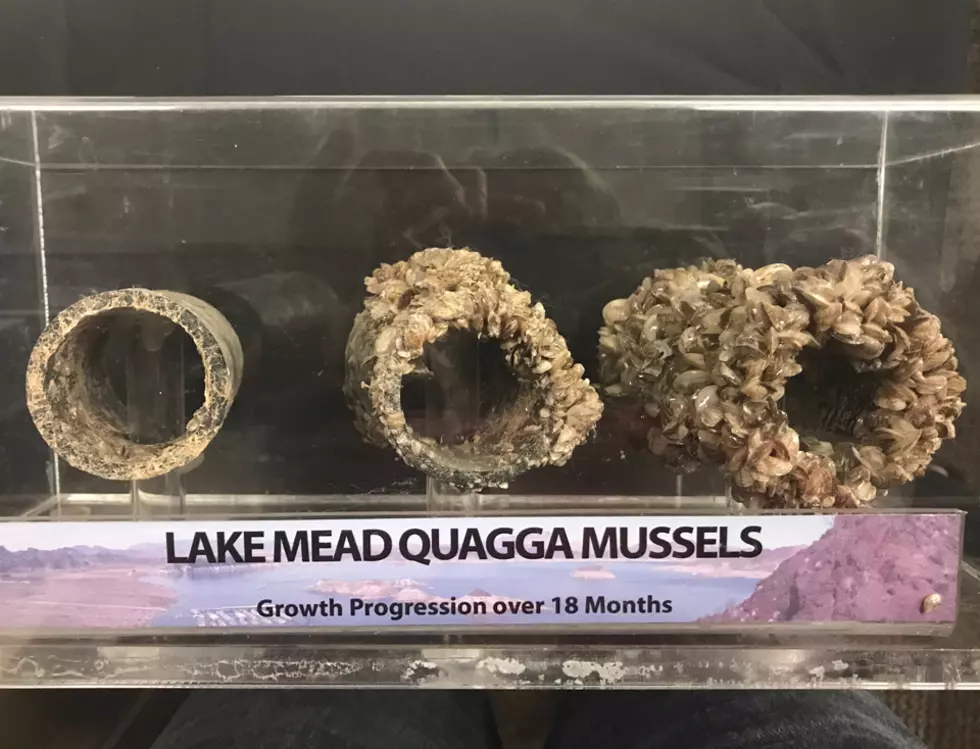
FWP: Montana still free of invasive mussels, but must remain vigilant
Now more than ever, Montana needs the help of local groups and concerned citizens if it wants to stay mussel free.
On Monday, Tom Woolf told the Upper Columbia Conservation Commission that Montana appears to still be free of aquatic invasive mussels three years after the scare of finding mussel larvae in Tiber Reservoir and Canyon Ferry.
Woolf is the Aquatic Invasive Species Bureau chief at the Montana Department of Fish, Wildlife & Parks.
That means Canyon Ferry, which had only one positive water sample making it suspect, could be removed from quarantine status by the end of this year, Woolf said during Monday's meeting in Missoula.
“We’re going to be sampling the heck out of it, probably forever, just because we saw something funky there,” Woolf said. “We had mussel-sniffing dogs out there a couple weeks ago. If we have no further detections out there this year, then we’ll start the process of requesting a rule change for Canyon Ferry.”
In 2016, Montana went on high alert when mussel larvae were detected in two water samples from Tiber Reservoir about 15 miles southeast of Shelby. Then a third positive sample showed up in Canyon Ferry.
Prior to that, Montana had been mussel free. Many hoped they could keep it that way. Once they become established, dime-sized zebra and quagga mussels can wreak havoc, covering boats, docks and hydropower turbines and choking irrigation pipes, costing millions for various water-dependent industries.
So Montana FWP ramped up its boat inspection program to try to catch mussels before they reached Montana’s lakes and rivers.
This year, more than 30 stations across the state inspected about 112,000 boats and were able to stop 15 that were carrying mussels.
The 2017 Legislature also created the Upper Columbia Conservation Commission to oversee outreach and monitoring in the Columbia Basin of Western Montana. It’s the only river system in the nation that remains free of mussels, so Idaho, Washington and western Canada all have vested interest in what Montana is doing to keep mussels away.
Because Tiber Reservoir had two samples with mussels in 2016, it will remain under quarantine for two more years, unless more mussels are found, Woolf said.
But so far this year, after more than 2,100 water samples from around the state yielded no mussels, Montana appears to have dodged a bullet. The state took 200 samples in Tiber and Canyon Ferry reservoirs alone.
Even though no more mussels have been found, Tiber Reservoir still causes concern, because scientists found environmental DNA in a 2017 water sample. That prompted scientists from the Flathead Biological Station to conduct an intensive DNA survey this year but came up with nothing.
“We’re still not really sure what that’s all about,” Woolf said. “Small populations can be difficult to detect. But we haven’t seen any evidence in two years.”
Mussels may have gotten through in 2016, but they don’t appear to have settled in. Woolf said any mussels that might have been there may have died when the reservoir is drawn down each year, dropping the water level about 15 feet, exposing the shallows.
“It’s tough for them to get established in that environment,” Woolf said.
Montana needs to stay vigilant, because the states won’t get much help from federal agencies.
State Sen. Mike Cuffe, R-Libby, said he was being considered for a seat on the Interior Department’s Invasive Species Advisory Committee, until President Trump disbanded the board a week ago because he plans to cut the National Invasive Species Council budget in half. It’s part of the administration’s move to disband one-third of the nation’s advisory councils.
Cuffe said he’s going to Washington, D.C., in two weeks to weigh in on invasive-species funding. He said he may get to visit the White House to lobby for keeping the Invasive Species Advisory Committee.
“The real deal of it though - it puts that much more emphasis on the things that all of us are doing,” Cuffe said. “If we look at these regional groups, they’re a mainstay. Bottom line, the burden’s on us.”
Last month, the Western Governors Association was doing its part to pressure federal agencies, particularly the Bureau of Land Management, to step up their mussel containment efforts around Lake Powell, Lake Mead and Lake Havasu.
Most of the boats found carrying mussels into Montana are purchased online from the Midwest and the Great Lakes, Woolf said. But a few come up from the heavily infested lakes of the Southwest and they need to be stopped.
“The closer mussels get, the more likely we are to get them,” Woolf said.
So the commission is spending time and money on outreach efforts asking boat shops, fly shops and marinas to encourage more people to clean, drain and dry their boats. The commission is also trying to help the state broaden its water monitoring efforts by recruiting and training community groups to sample their lakes and streams.
“If we prevent the mussels from coming in for five years, that allows technology five more years to come up with a better solution,” said commission member Phil Matson.
Contact reporter Laura Lundquist at lundquist@missoulacurrent.com.
